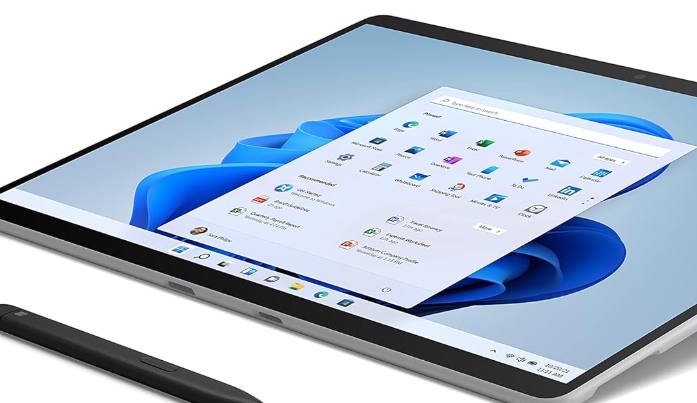Microsoft’s Surface Pro X series has always been an ambitious attempt to redefine the 2-in-1 laptop category, blending sleek design with ARM-based performance. The 2nd generation Surface Pro X, released in 2020, arrived with high expectations, promising better performance, improved software compatibility, and a refined user experience. But did it live up to the hype? Let’s dive into what it brought to the table, how it replaced its predecessor, and what users liked—and didn’t like—about it.
A Step Forward from the Previous Model
The first-generation Surface Pro X (2019) introduced Microsoft’s ARM-based custom SQ1 processor, a departure from the traditional Intel x86 architecture found in most Surface devices. While it impressed with its ultra-thin design and LTE connectivity, users faced software compatibility issues, particularly with traditional 64-bit Windows apps that weren’t optimized for ARM.
With the Surface Pro X (2nd Gen, 2020), Microsoft sought to improve on these shortcomings by introducing the upgraded Microsoft SQ2 processor, co-developed with Qualcomm. This chip provided a modest performance boost and improved energy efficiency. The second-gen model also introduced a new Platinum color option, giving users a choice beyond the original matte black finish.

What’s New in the Surface Pro X (2nd Gen, 2020)?
While the design remained largely unchanged, Microsoft focused on refining the device’s internals and software experience. Key improvements included:
- Microsoft SQ2 Processor – A slightly enhanced version of the SQ1, offering better performance and efficiency.
- Improved x64 Emulation Support – Addressing a major flaw from the first model, Microsoft improved support for traditional 64-bit Windows apps via software emulation.
- Better Battery Life – Optimization in power consumption led to a more reliable battery experience.
- New Platinum Color – Offering a fresh aesthetic option.
- Upgraded GPU Performance – Better graphical capabilities for light creative work and web-based applications.
What People Liked
The Surface Pro X (2nd Gen, 2020) built on the strengths of its predecessor while addressing some major criticisms. Users appreciated:
- Sleek and Modern Design – With ultra-thin bezels and a lightweight aluminum chassis, the Surface Pro X stood out as one of the best-looking 2-in-1 devices.
- Always-Connected LTE – The inclusion of built-in LTE was a game-changer for professionals needing a portable work device without depending on Wi-Fi.
- Improved App Support – Although not perfect, Microsoft’s efforts in x64 emulation allowed more applications to run smoothly.
- Great Battery Life – With an estimated up to 15 hours of usage, the ARM-based architecture proved energy-efficient compared to Intel-based Surface Pro models.
- Instant-On and Silent Operation – Thanks to the fanless design, users enjoyed a noiseless experience and fast wake-up times.
What People Didn’t Like
Despite its improvements, the Surface Pro X (2nd Gen, 2020) still had notable drawbacks:
- Limited Software Compatibility – Although x64 emulation improved, performance issues persisted for apps not optimized for ARM.
- No Thunderbolt Support – Unlike other premium laptops, the USB-C ports lacked Thunderbolt capabilities, limiting high-speed external storage and display options.
- Price vs. Performance – The starting price of $1,499 for the SQ2 variant (without the keyboard or stylus) was seen as steep for a device with software limitations.
- Still No Headphone Jack – Microsoft omitted a 3.5mm headphone jack, which disappointed users who preferred wired audio.
CPU and Battery Performance
The Microsoft SQ2 processor, an evolution of the SQ1, was based on Qualcomm’s Snapdragon 8cx Gen 2. It provided improved GPU performance but was still outclassed by Intel and AMD chips in raw power. This meant that while it excelled in web browsing, media consumption, and light productivity tasks, it struggled with heavy workloads like video editing or gaming.
On the battery front, Microsoft claimed up to 15 hours of usage. While real-world performance varied, many users reported achieving around 10–12 hours with mixed usage, making it one of the better options for all-day productivity.
Conclusion: Was It Worth It?
The Surface Pro X (2nd Gen, 2020) refined what Microsoft started with the original model, offering better performance, improved app support, and a slightly better battery life. However, software limitations and a high price continued to hold it back from being a true laptop replacement for all users.
For professionals who needed a lightweight, always-connected device for web-based work, writing, and media consumption, the Surface Pro X (2nd Gen, 2020) was a great choice. However, for power users who required extensive software compatibility, the Intel-based Surface Pro 7+ or Surface Pro 8 remained the better options.
Ultimately, Microsoft’s commitment to ARM-based Windows devices was promising, but the Surface Pro X (2nd Gen, 2020) still felt like a step toward a future that hadn’t fully arrived yet.